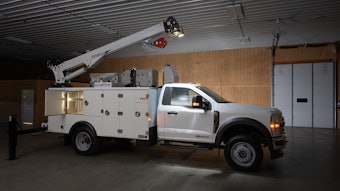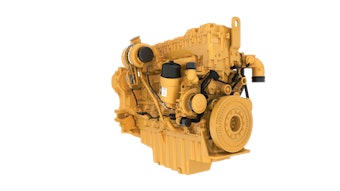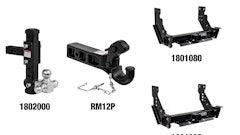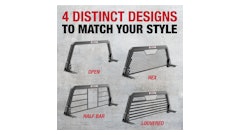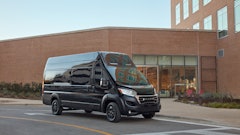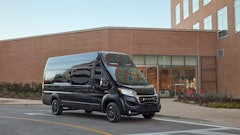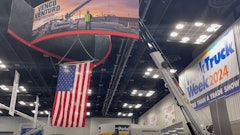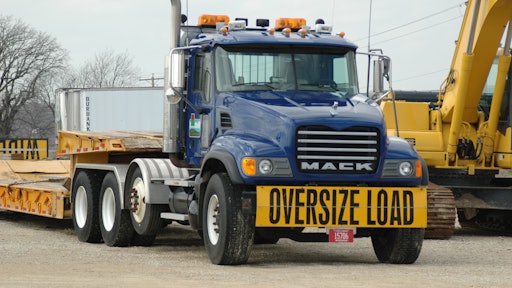
Driving a rig is a full-time job demanding attention, not cell phone chatter. We’ll give you credit for having already covered the “basics,” such as the three-point stance. If your guy is having issues just getting in and out of the rig at this point, you have bigger problems than this article can address.
Defensive driving takes many forms. A lot of it is highly situational and depends on your drivers’ ability to negotiate lots of different factors, including:
- Distracted drivers (four wheelers)
- Pedestrians, bikes, scooters
- Terrain
- Paved/unpaved surfaces
- Weather
- Visibility
- Clearances
- Loading/unloading (dumping)
- Trailering/towing
- Backing
Some of what follows may sound extreme, but the moral of the story is that you should be doing everything possible to prevent an accident because no one else is going to do it. This means your driver has to understand your uncompromising commitment to safe driving.
Put a Driver Safety Program in Place
There are enough electronics available today to measure driver performance, so the old excuse that “I can’t sit in the cab beside them” is no longer acceptable. Now, you can figuratively sit in the cab, and you should. The thought process behind this is not to be “Big Brother”, but to protect your interests. Your name is on that door. You need an established body of rules and performance metrics you can point to that prove your company is a responsible one.
If you have independent contractors (owner/operators) working for you, you do not get a pass. You need to include them in your safety program, or at least make an effort. Depending upon which state you are working in, their negligent driving could come back to bite you.
Here are some starting points for your safety program:
- ANSI has what’s called a Fleet Safety Management Standard. If you have nothing on the books already, start here, or ask your insurance agent or carrier for some help. ANSI charges to download their standards, but a Google search will find most of the same information. The ANSI Standard number is Z-15.
- Use a GPS, paperless logs, electronics, etc. to get a readout of your drivers’ performance in the rig. Set standards based on good, fair and unacceptable performance. Hard brake events should be examined closely. They are indicators of near-miss incidents or poor driving habits.
- Driver safety is such a common problem that even Verizon is selling a fleet management program (www.networkfleet.com). And who should know better than they do about all things fleet safety?
- Vehicle makers are continually improving their hardware. Take advantage of the newest safety features. In other words, upgrade vehicle hardware whenever you can. Use older units for parts or as backup. It’s tax deductible.
- Ask yourself if your driver has ever received any information that contained the words “defensive driving.” Push the information out. Safety meetings are preferred, but even “read & sign” will work. Get signatures.
- The DOT is still obsessive about inspections and, yes, these are important. But let’s face it, the reliability of new rigs will rival a BMW. You still have to do the obligatory walkaround, but better yet, have a mechanic give it a once over at the end of the shift to identify any problems and fix them overnight so the rig is ready to roll in the a.m.
- Just because your drivers passed their DOT physical does not instill confidence; that exam is basically to be sure the guy has a pulse. Some insurance companies are requiring a version of a Functional Capacity Exam (FCE) to accompany the DOT physical. The DOT is also implementing the Neck Size rule, which is aimed at the dangerous “morbid obesity” range, when sleep apnea causes fatigue, etc. In other words, start looking for physically fit drivers or get a wellness program going at work.
- Keep in mind that OSHA basically does not have Word One on safe driving practices. That’s because the topic is nominally under the auspices of the DOT. For example, when is the last time you heard from the DOT that intersections of all types are the highest crash frequency environments? Or how to approach and take a turn safely? Actually, the information is there, but it’s buried so deep in their voluminous rubric, you’ll never find it.
- Here’s a tip: Most state Department of Motor Vehicles handbooks at least make an effort to teach good driving practices. They are online and free. Google the CDL handbook for your state. You can also access US DOT safety information at www.transportation.gov.
- The days are gone when you could say, “I hired the guy as an experienced driver. He’s supposed to know all this stuff.” Wrong. You need to show that you have educated your drivers. One of the leading deficiency findings on DOT audits is failure to hold a safety meeting within so many months. Your reply that “They all start and stop at different times; they’re never together at one time” is no excuse. Figure out a plan and round them up.
Here’s another under-the-radar tip: Push your insurance company for safety information. Most of the good ones will have something to share. Tell them to send out a safety person for a look around. Get on their mailing list.
Slow and Steady Keeps It Safe
Think what an accident will cost vs. the cost of making your run early in the morning or late at night — not during rush hour, or when school is getting out. If your driver sees a pedestrian, bicyclist or motorcyclist anywhere near them, they need to move into a defensive posture.
Make sure your drivers understand the difference between running fast and running reckless. There is minimal difference in arrival time when your guy is pushing it vs. taking it slow and steady. There is, however, an exponential increase in the risk of having an accident, in which case, you will probably pay through the nose for a long time in insurance premiums. Ask yourself: Would you want that cowboy running the rig if your family was driving alongside him?
We have only touched on some of the intermediate safety factors here. More details on defending your company and driver will be in the next article.




